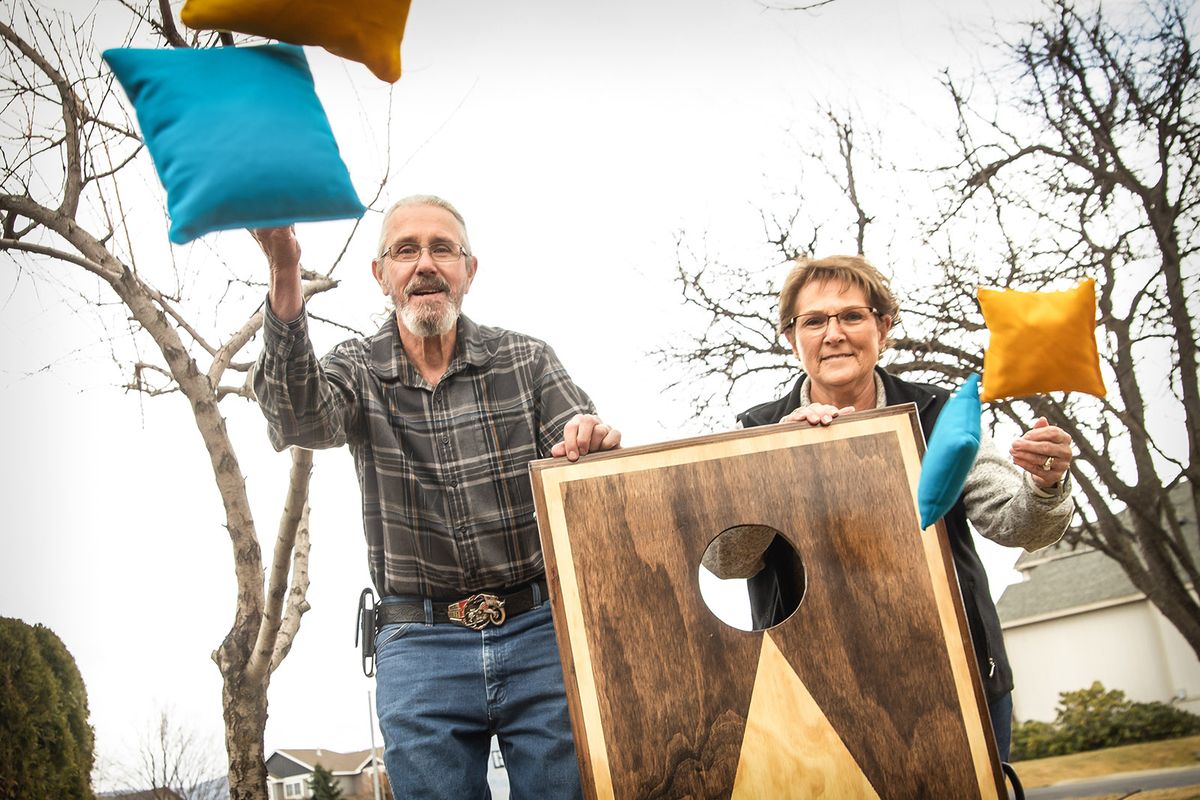Pandemic projects: Game for new enterprise - Spokane Valley couple complete 22 cornhole game for family, friends, strangers

Gary Prusa’s pandemic project started small.
“It started out innocently,” the Spokane Valley resident said. “I dabble in woodworking, and my sister asked me to make her a regulation-size cornhole game set.”
Cornhole is a popular game in which small bags filled with dried corn are tossed at a target consisting of an inclined wooden platform with a hole at one end.
After finding a plan online, he crafted his first set in May, and enlisted the help of his wife, Millie Prusa, to make the game bags to go with it.
“They’re actually filled with real corn,” she said. “I think that may be how the game got its name.”
His sister was happy with the set, so Gary eyed some other projects.
“Then my daughter and son-in-law wanted a cornhole set to take to Priest Lake where they boat camp every summer,” Gary said.
Back to the wood shop, he went.
“No sooner had I got that one finished, than my grandson put in his request for one,” Gary said. “That’s when it started to snowball.”
Friends saw the cornhole games he’d made for his family and requests flooded in. That’s when he decided to sell them.
“Before long I was making and selling sets for people I didn’t even know.”
Each set consists of two boards, each 2 feet by 4 feet, with a 6-inch diameter hole in the center. Originally, Gary customized the sets with decals, but the quality of the decals became an issue, so he stopped using them.
He stains each board on two-sides, as well as the edges, giving the wood an inlaid appearance. Several coats of polyurethane sealer protects and preserves the finish. Sturdy legs fold up, and Gary affixed a handle on one side for easier portability.
“The hardest part was waiting for the polyurethane to dry,” he said. “I worked on them four to five hours a day. I can knock out a set in three days.”
Meanwhile, Millie kept sewing game bags. Each set comes with eight bags in a matching sack, but Millie made extra bags for some sets.
She bought the dried corn at a local feed store.
“I went through three 50-pound bags of dried corn,” she said.
Millie used duck cloth (a kind of canvas) to make the bags. The fabric wasn’t available in Spokane, so she had to make a drive to Coeur d’Alene to purchase it.
As Christmas approached the couple had one cornhole game left.
“I put it on Facebook Marketplace, and it sold so quickly!” said Gary. “I made three more sets after Christmas.”
By the time the sawdust settled, he had made 22 cornhole sets, and Millie had made 220 bean bags. He also got really good at the game.
Now he’s ready to tackle some new projects. His cornhole-crafting days may be behind him, but in addition to making many people happy, this pandemic project came with an added bonus.
When asked what he would have been doing had his time not been consumed with making the games, Gary shrugged.
“I probably would have been bugging my wife,” he said.
———
Cindy Hval can be reached at dchval@juno.com